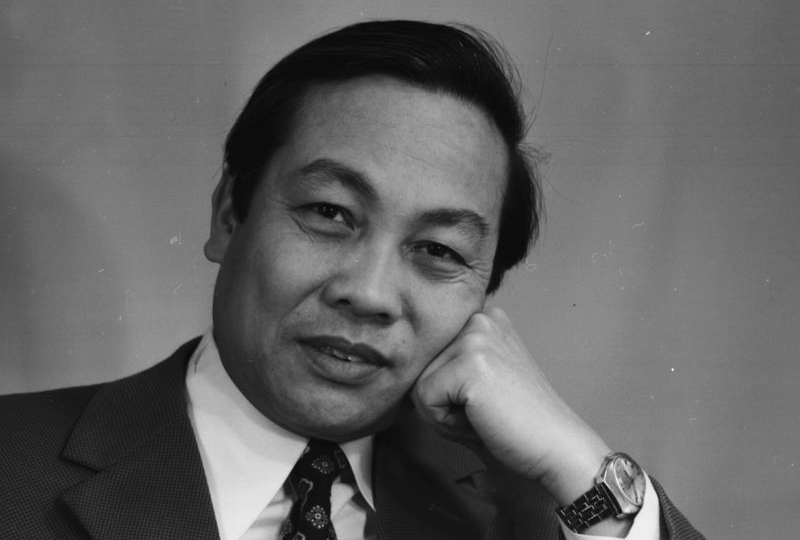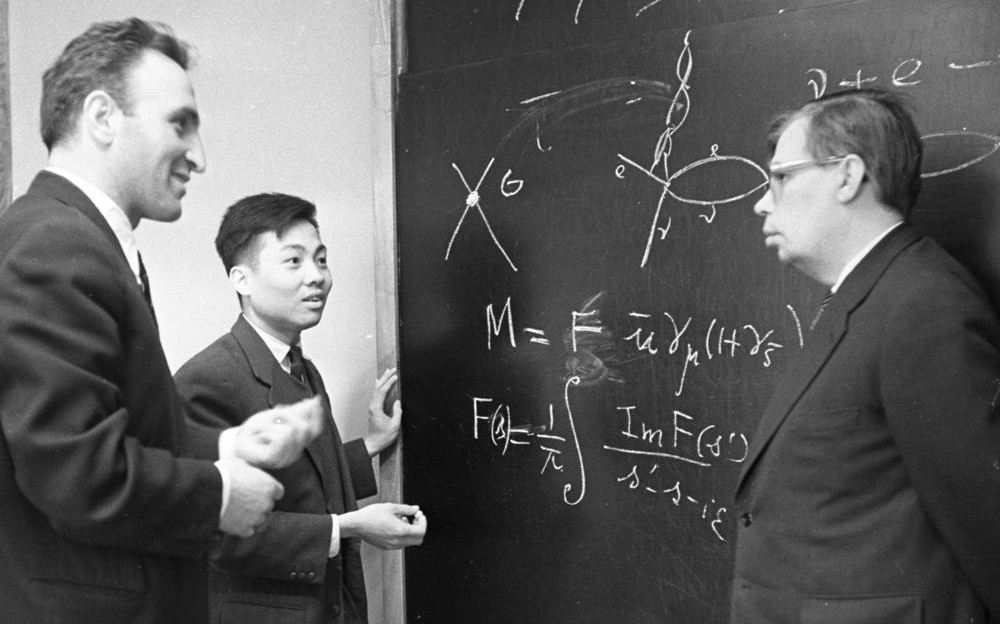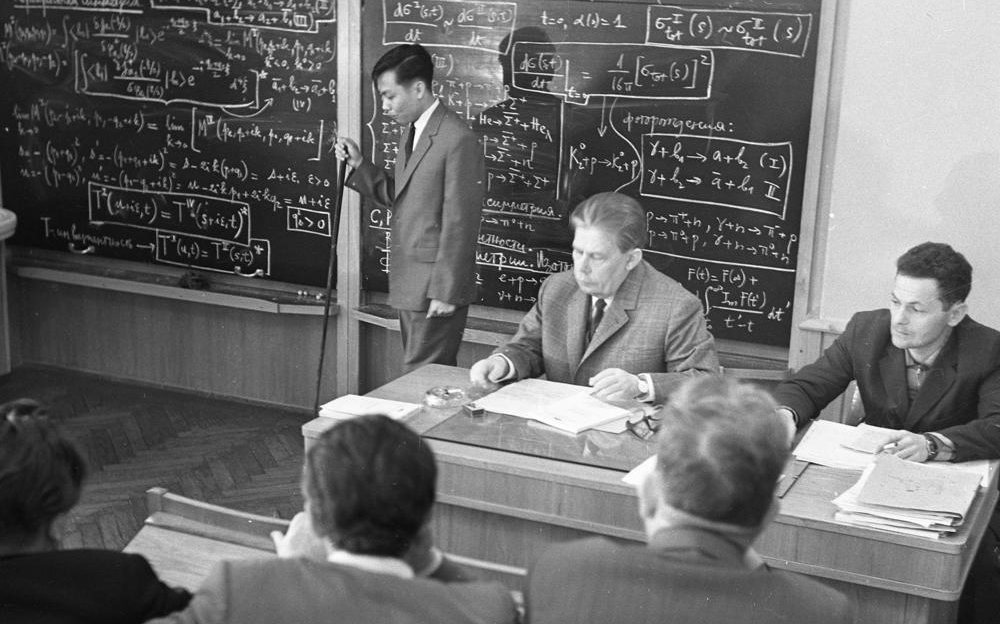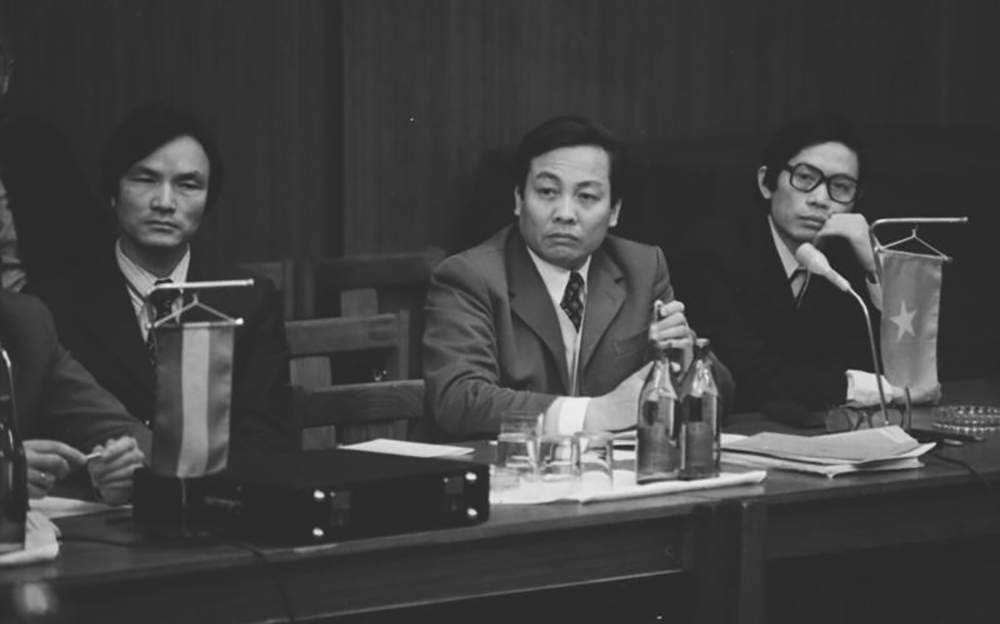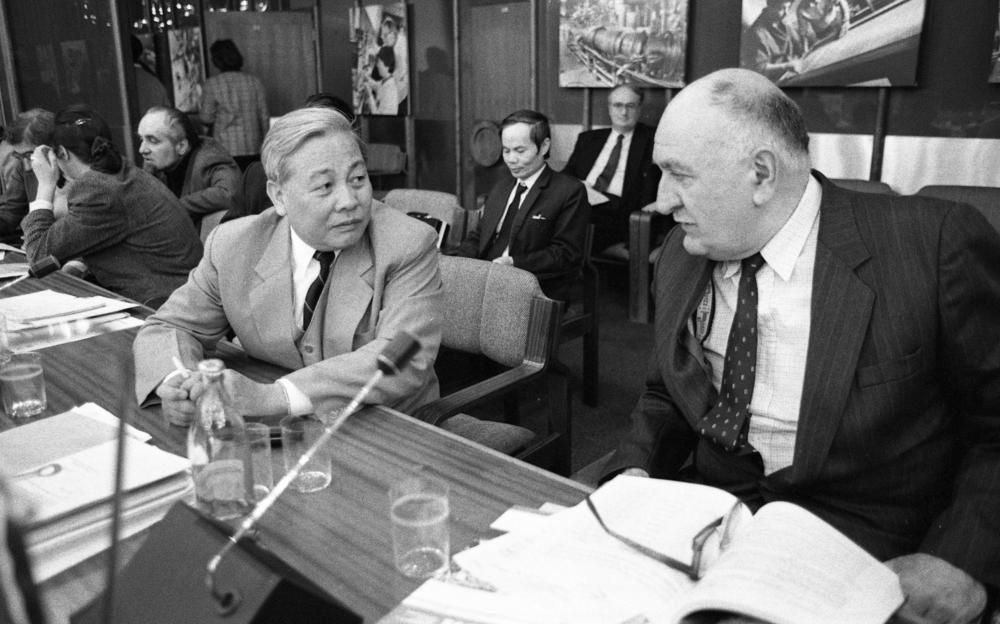Nguyen Van Hieu. Serving to science for benefit of people
News, 21 July 2023
21 July marks the 85th anniversary of the birth of Academician Nguyen Van Hieu (21.07.1938 – 23.01.2022), one of the greatest Vietnam scientists and ex-president of the Vietnam Academy of Science and Technology. For many years he was a member of the JINR Scientific Council and Plenipotentiary Representative of the Government of Vietnam in JINR.
A future specialist in the field of quantum field theory and theoretical particle physics Nguyen Van Hieu was born in Hanoi into a family of civil servants. He was the eldest of ten children. All of them received higher education, with six becoming doctors of sciences and two becoming academicians.
In 1946 – 47, with the arrival of the French colonisers, the family had to leave the capital and go to live in the countryside. There, in adolescence, the future scientist worked as an apprentice in a knitting shop for some time in order to earn a living. “I realised that the productivity of a knitting machine was several hundred times higher than that of manual labour. Since then I dreamed that one day, when we won the Resistance War, I would definitely apply for university to study at the engineering faculty”, Academician Nguyen later recalled. In 1954, Hanoi was liberated from the French occupation, and the Nguyen family returned to the Hadong metropolitan area. Nguyen Van Hieu entered the Hanoi National University of Education, where in 1956 he received a Bachelor’s degree in physics with honours. Then the young scientist started teaching at Hanoi University, and was sent to work at JINR in October 1960.
By April 1963, after two and a half years of work in Dubna, Nguyen Van Hieu published 12 studies on neutrino physics and defended his doctoral dissertation at the age of 26. The reference read out at the defence of his doctoral dissertation stated, “Talented and energetic physicist Nguyen Van Hieu became a high-class theoretical physicist. He quickly enters new fields of theoretical physics, fully mastering the technique of new research. No matter what field he works in, he always obtains new and important results”.
Four years later, Nguyen Van Hieu received the title of professor at Lomonosov Moscow State University. “In Dubna, he turned from a hydraulic engineer into a highly qualified experimental physicist participating in fascinating research at the Synchrophasotron”, the JINR newspaper “For Communism” wrote about him in 1967. The researcher’s colleagues noted that he had a wide range of interests, high work capacity, and ability to think outside the box in relation to various fields of theoretical physics. In addition to these qualities, the scientist was distinguished by strategic thinking and was constantly in search of solutions for the science progress in his country.
In 1969, Nguyen Van Hieu returned to Vietnam to become the youngest director in the history of the Vietnamese science, being appointed Director of the Institute of Physics of the Vietnam Academy of Science and Technology and joining the Vietnamese State Committee for Science and Technology. In 1975–2006, he held the positions of Director of the Institute of Materials Science and Director of the National Institute of Scientific Research, President of the Vietnam Academy of Science and Technology. Since 2005, he has been Head of the Asia-Pacific Centre for Theoretical Physics.
 Nguyen Van Hieu (second from the left) during a working visit of the Vietnamese Academy of Science and Technology delegation to JINR in February 2010
Nguyen Van Hieu (second from the left) during a working visit of the Vietnamese Academy of Science and Technology delegation to JINR in February 2010
Throughout his scientific career, Nguyen Van Hieu has maintained cooperation with the Joint Institute for Nuclear Research. In 1982, he was appointed Head of the Sector of the Laboratory of Theoretical Physics JINR. Starting from 1981 and for many years to come, Academician Nguyen has been the Plenipotentiary Representative of Vietnam in JINR. He has made a great contribution to the development of Vietnam’s scientific potential and strengthening its position in JINR and the international scientific community as a whole. He was a member of the JINR Scientific Council many times, starting from the 1960s and up to the 2000s. Nguyen Van Hieu wrote more than 130 scientific works covering many fields, i.e., quantum field theory, elementary particle physics (elementary particle symmetry, hadron interaction at high energies, neutrino physics), and condensed matter physics. He studied asymptotic relations between scattering amplitudes in relativistic local quantum field theory. Part of his works is devoted to the structure of vector current in the weak interaction, the theory of unitary symmetry of elementary particles and dispersion relations. His articles include works on the theory of superconductivity and electron pairing in superconductors.
Anatoly Logunov, Mirian Mestvirishvili, and Nguyen Van Hieu developed a method for studying the multiple particle generation in strong interactions (inclusive process). In 1962, even before the discovery of neutral currents and neutrino experiments, Semyon Gerstein, Rudolf Eramzhyan, and Nguyen Van Hieu showed that the excitation of nuclei by neutrino scattering could be used to search for neutral currents in the medium energy. The authors chose the interaction, which for the allowed nuclear transitions with a spin change completely coincided with that given subsequently by the electroweak theory. This result stimulated the work of Yuri Gaponov and Igor Tyutin on the calculation of the cross section of the neutrino deuteron splitting process. This process subsequently became the most convincing evidence of solar neutrino oscillations and the validity of the Standard solar model.
Professor Nguyen Van Hieu also authored and co-authored applied research papers that were of great importance to the Socialist Republic of Vietnam. Together with his two brothers, he developed a concept of energy saving in agriculture. In 1996, Nguyen Van Hieu was a consultant on a government project on diverting floodwater from the Mekong Delta into the South China Sea. “Nguyen Van Hieu has temporarily put aside the problems of ‘high’ physics research to find ways to apply science to solve issues related to people’s lives,” Vietnamese media wrote about him. The scientist also contributed to the organization of mass plantings of yellow-flowered sage in the northern mountainous region in the 1990s. Industrial production of anti-malarial drugs from the plant was initiated for the benefit of people in remote and isolated areas and ethnic minorities. In addition, the scientist was one of those who ensured Vietnam’s participation in the Interkosmos Space Programme.
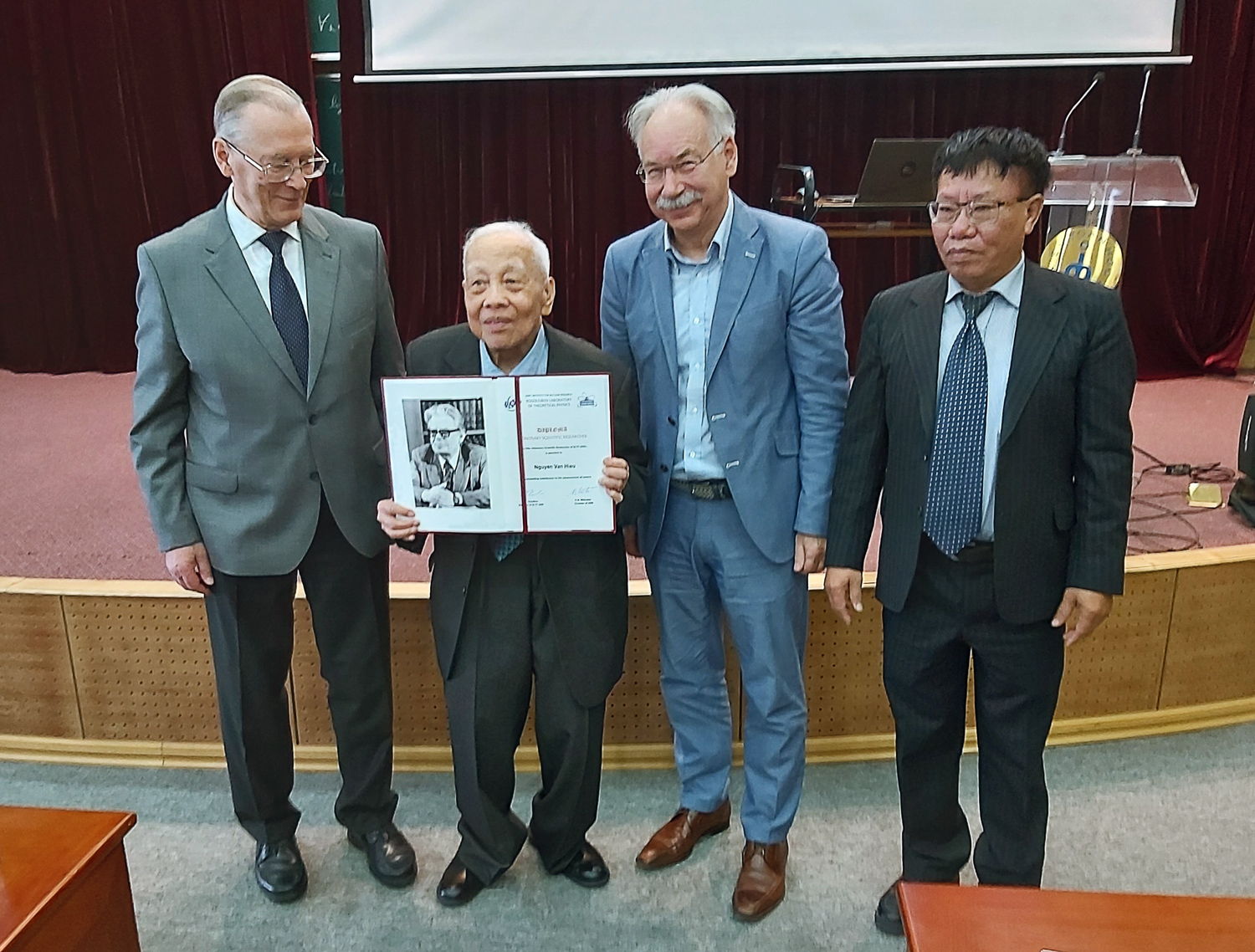 JINR Director Victor Matveev awarded Nguyen Van Hieu a diploma of Honorary Fellow of the Laboratory of Theoretical Physics at the CP meeting in Hanoi in November 2019
JINR Director Victor Matveev awarded Nguyen Van Hieu a diploma of Honorary Fellow of the Laboratory of Theoretical Physics at the CP meeting in Hanoi in November 2019
Nguyen Van Hieu was the founder and rector of the University of Technology of the Vietnam National University and the founder and first editor of the Vietnamese journal Advances in Natural Sciences: Nanoscience and Nanotechnology. In his homeland he is also known as a politician, since he was a deputy of the National Assembly of Vietnam for five convocations.
Academician Nguyen Van Hieu received many awards, the Lenin Prize in Science and Technology (1986), the Ho Chi Minh Prize in Science and Technology (1996), the Order of Friendship (1996), etc. He won the first degree Vietnam Independence Order (2009) and the People’s Teacher title. He was a foreign member of the USSR and Russian Academies of Sciences, as well as Academician of the World Academy of Sciences and the New York Academy of Sciences.
For several years, he chaired the jury of the Vietnam Talent Awards in Natural Sciences and sponsored the prize from his personal income.
